Pollen grains: tactoids and spiky spheres
 Jul 29, 2018 • 2:58 PM UTC
Jul 29, 2018 • 2:58 PM UTC Unknown Location
Unknown Location 140x Magnification
140x Magnification Microorganisms
Microorganisms
Kim Weirich
Learn about the author...
1posts
0comments
1locations
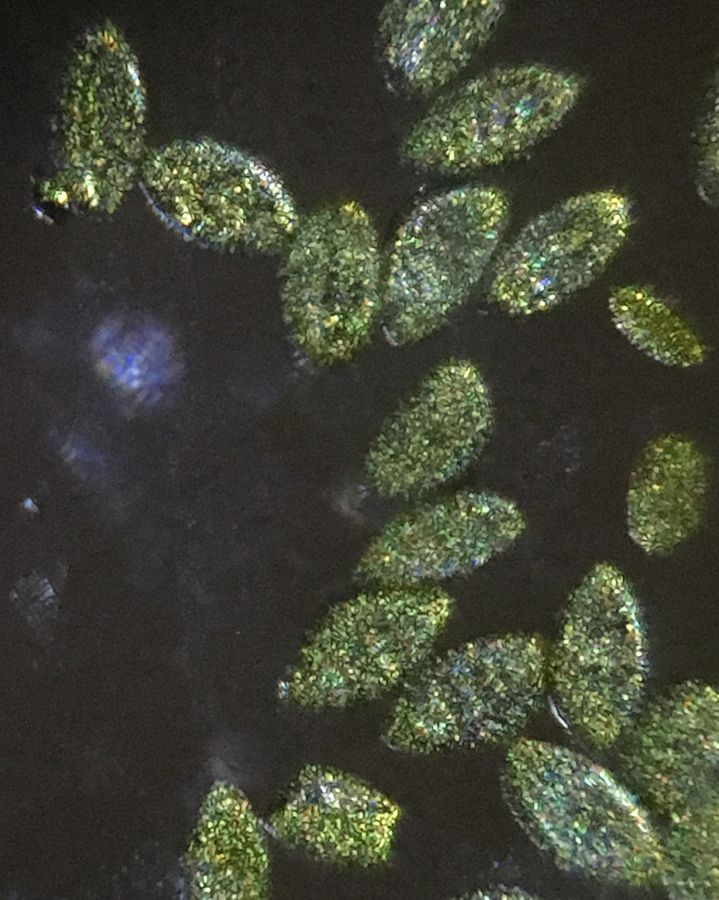
Hi Foldscope Expolorers!
This is my first foldscope adventure. Last year, Manu shared the joy of foldscopy with a bunch of us at the University of Chicago. Yesterday, I finally built my own foldscope and I’m excited to try it out! Next week, I will share foldscopy with some Chicago Public School teachers. Hopefully, their classes will explore the Microcosmos!
As I walked through campus collecting samples, I realized that I have never looked at a flower with a microscope before. What a perfect time to change that! Especially curious about pollen, I removed a stamen–one of the long, curved filaments, that is topped with an anther covered in pollen–from this flower:
This is my first foldscope adventure. Last year, Manu shared the joy of foldscopy with a bunch of us at the University of Chicago. Yesterday, I finally built my own foldscope and I’m excited to try it out! Next week, I will share foldscopy with some Chicago Public School teachers. Hopefully, their classes will explore the Microcosmos!
As I walked through campus collecting samples, I realized that I have never looked at a flower with a microscope before. What a perfect time to change that! Especially curious about pollen, I removed a stamen–one of the long, curved filaments, that is topped with an anther covered in pollen–from this flower:
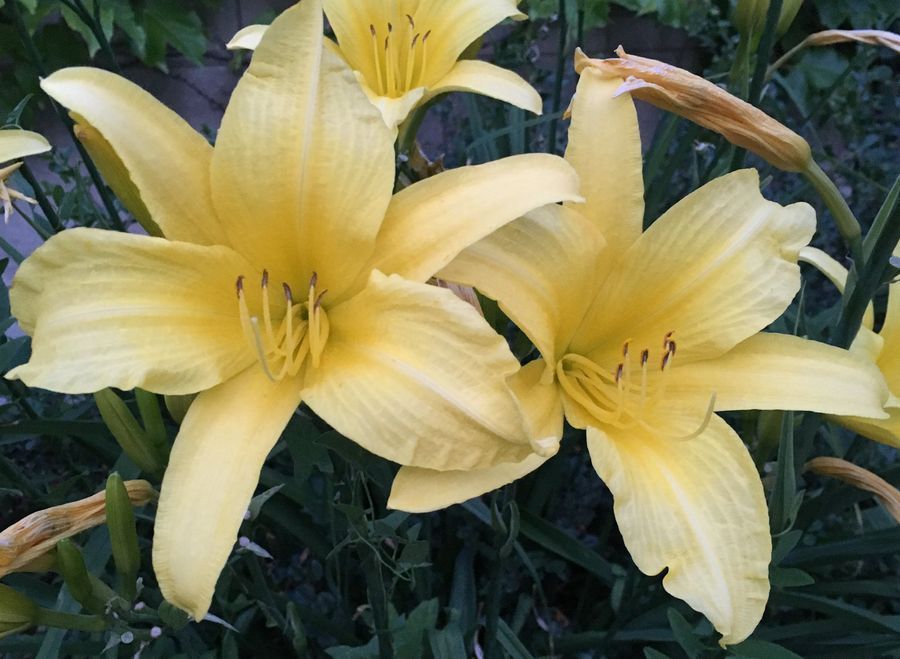
Flower #1 To transfer pollen to my sample, I tapped the anther lightly against a glass slide. Yellow pollen dusted the glass. Placing a coverslip on top of the pollen dust and applying pressure with my finger, I shifted the glass to spread the pollen in a thin layer and glued the coverslip in place.
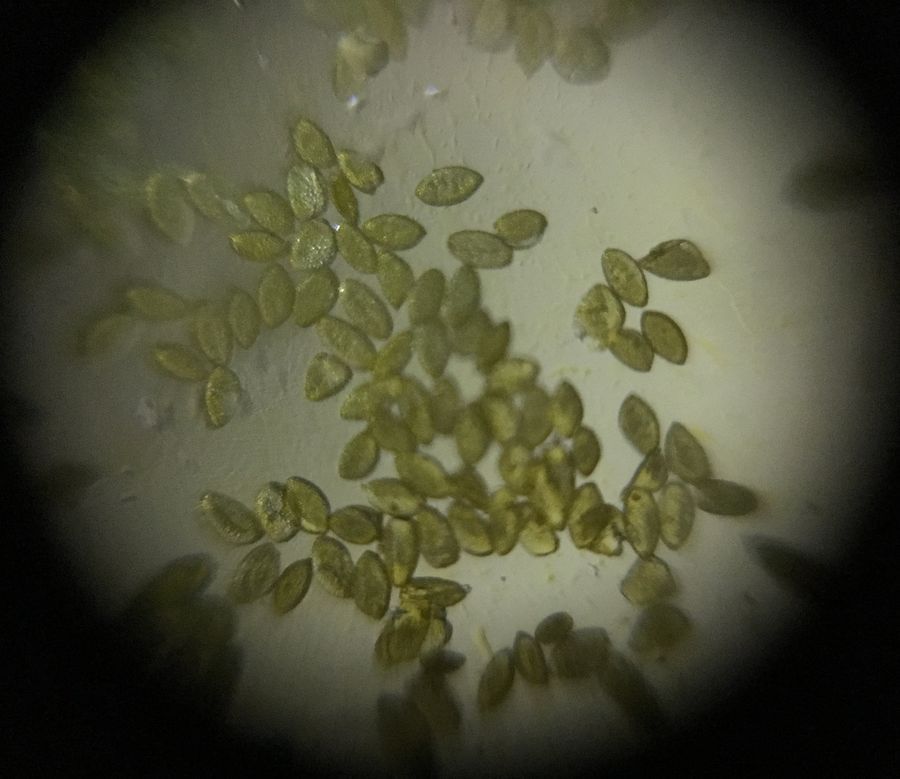
Pollen grains without additional magnification
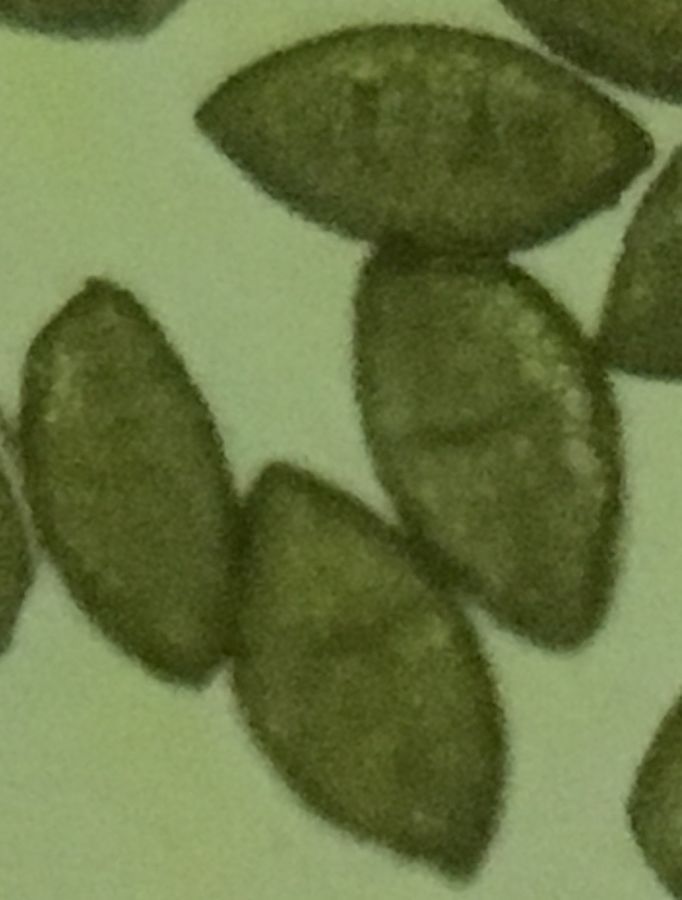
Close-up of pollen grains. These have a tactoid shape! Delightfully, I found these pollen grains. The pollen grains appear to be all the same size and shape. To really see how much variation there is, we would need to measure these!
What an intriguing shape! It is almost like an ellipse, but has pointy ends, like an American football. This shape is called a tactoid . Well, tactoids are very special shapes, technically, but this reminds me of them. Tactoids are my favorite shape! (Sorry, trapezoid.) I wonder what determines a pollen grain’s shape and size.
I know there are many amazing Pollen Explorers in the Microscosmos that have documented several different types of pollen grains. Not surprising, because pollen is so fascinating!
What an intriguing shape! It is almost like an ellipse, but has pointy ends, like an American football. This shape is called a tactoid . Well, tactoids are very special shapes, technically, but this reminds me of them. Tactoids are my favorite shape! (Sorry, trapezoid.) I wonder what determines a pollen grain’s shape and size.
I know there are many amazing Pollen Explorers in the Microscosmos that have documented several different types of pollen grains. Not surprising, because pollen is so fascinating!
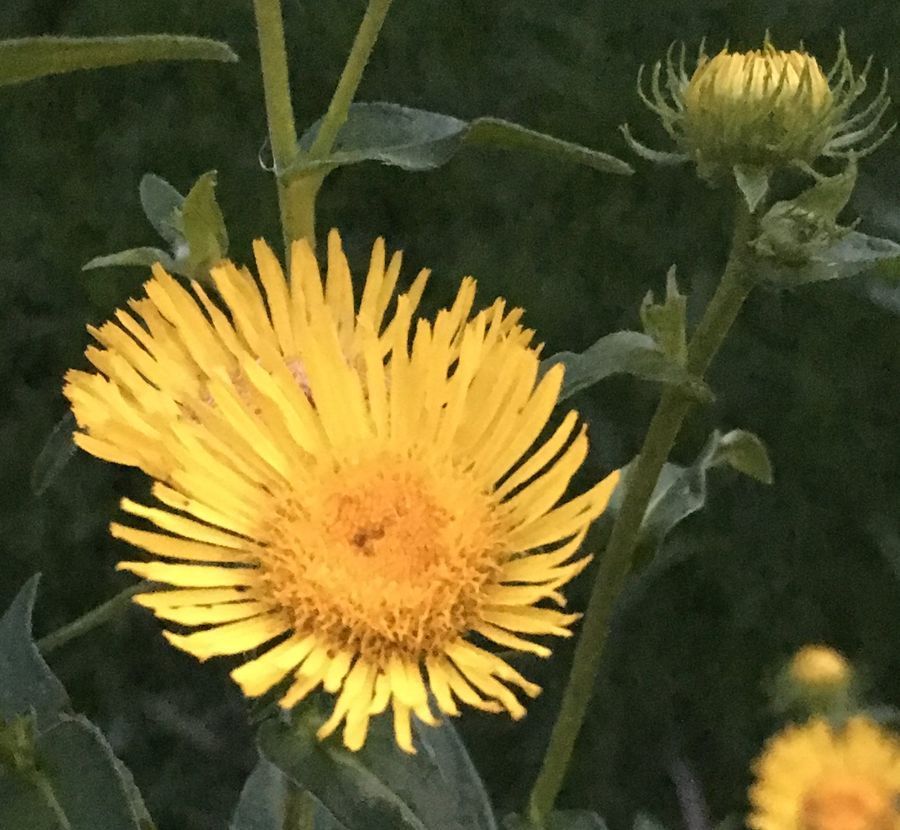
Flower #2 When I was exploring, I wondered if all pollen grains were this intriguing shape. To find out, I investigated a different flower species.
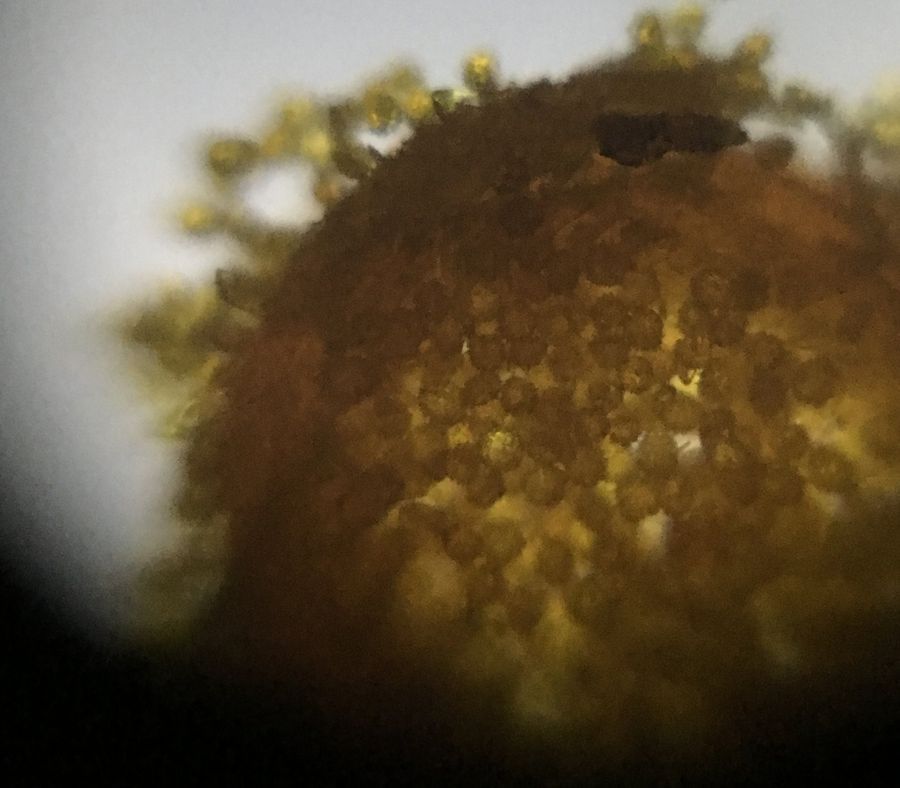
Cluster of pollen from Flower #2
The pollen in this flower didn’t disperse as easily as in the Flower #1. To prepare this sample, I plucked a pollen containing filament and squished it between the glass slide and coverslip.
The pollen in this flower didn’t disperse as easily as in the Flower #1. To prepare this sample, I plucked a pollen containing filament and squished it between the glass slide and coverslip.
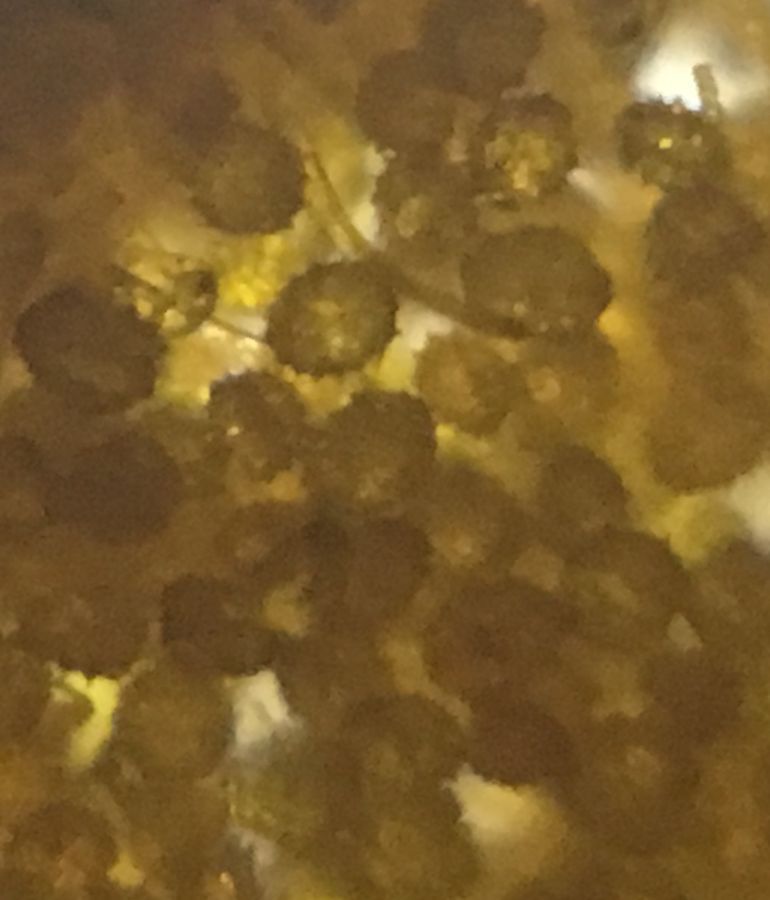
Close-up of the center of Flower #2’s pollen cluster. These pollen grains are densely clustered. They are uniform in size and shape, but they are much smaller than the pollen in Flower #1. Also, these pollen grains aren’t tactoids, they are rounder.
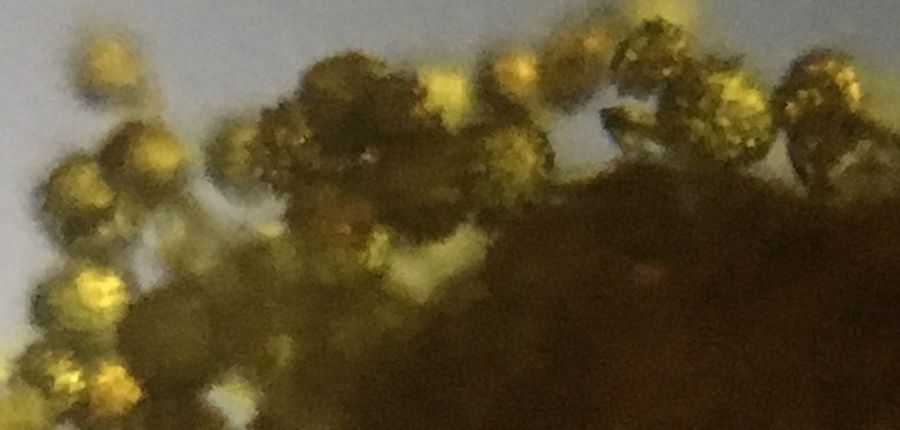
Close-up of spiky spherical pollen granules at the edge of the pollen cluster.
Along the the edge of the cluster, we can see individual grains more clearly. Flower #2’s pollen grains are shaped like spiky spheres!
Along the the edge of the cluster, we can see individual grains more clearly. Flower #2’s pollen grains are shaped like spiky spheres!
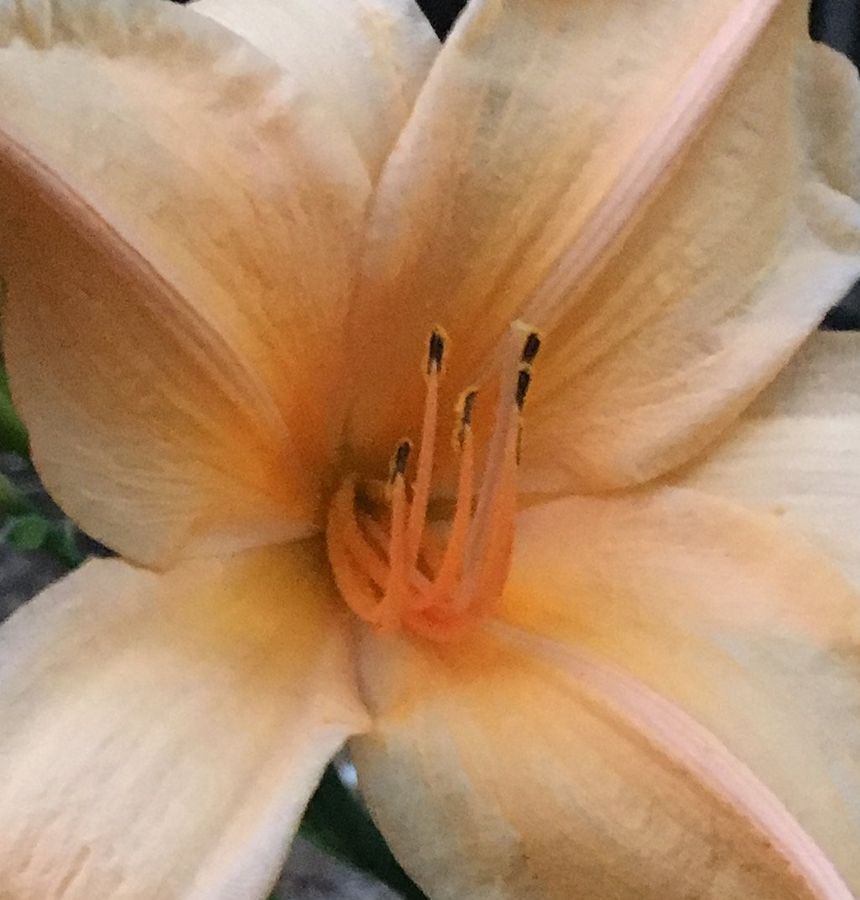
Flower #3. This is similar to Flower #1, but has orange blooms rather than yellow. I decided to explore the tactoid-shaped pollen further. I collected another pollen sample (#3).
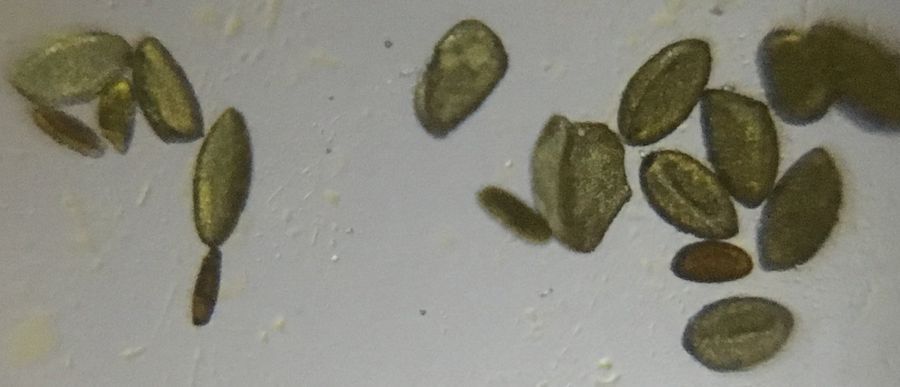
Pollen grains from Flower#2. The shape seems less uniform. This may be from my sample preparation technique.
The orange flower pollen grains are also tactoid shaped, but are less uniform. Can you think of reasons why this could be? We would need to explore a lot more to find out!
The orange flower pollen grains are also tactoid shaped, but are less uniform. Can you think of reasons why this could be? We would need to explore a lot more to find out!
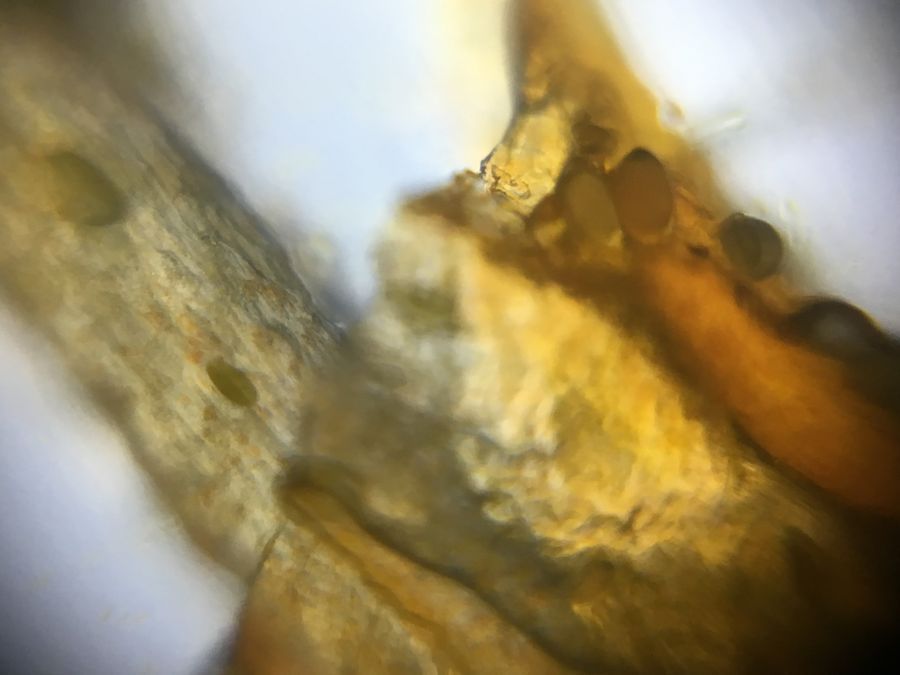
Thick section of Flower #3 stamen. To see where the pollen grains come from, I sliced the stamen in half and made a microscope sample from the thick sections.
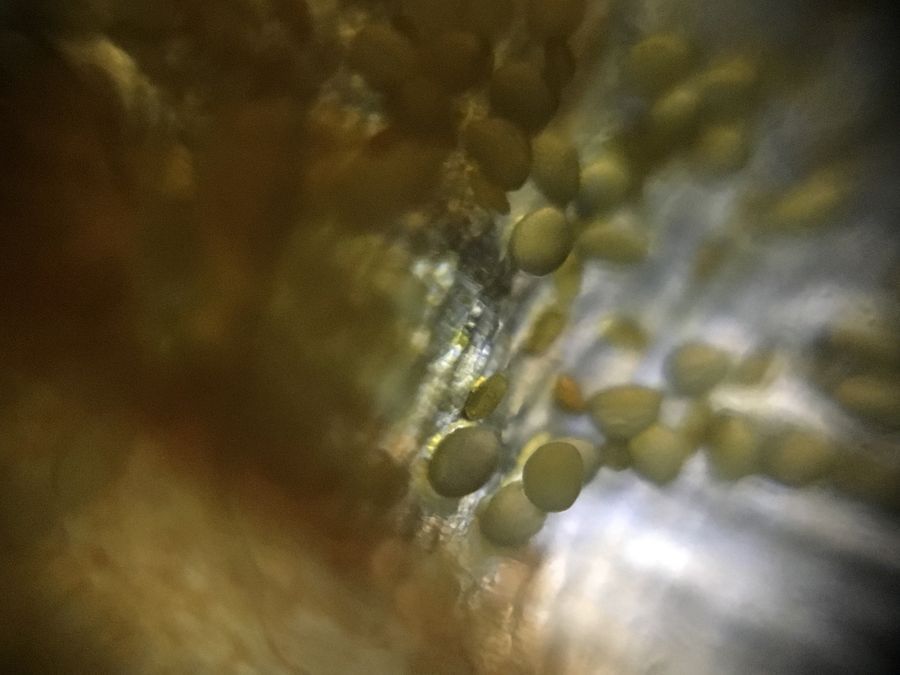
Section of the stamen in Flower #3. Pollen granules are more elliptical.
When the pollen grains are in the stamen, they are oblong, but do not have the pointy tactoid ends. Instead they are more elliptical.
When the pollen grains are in the stamen, they are oblong, but do not have the pointy tactoid ends. Instead they are more elliptical.
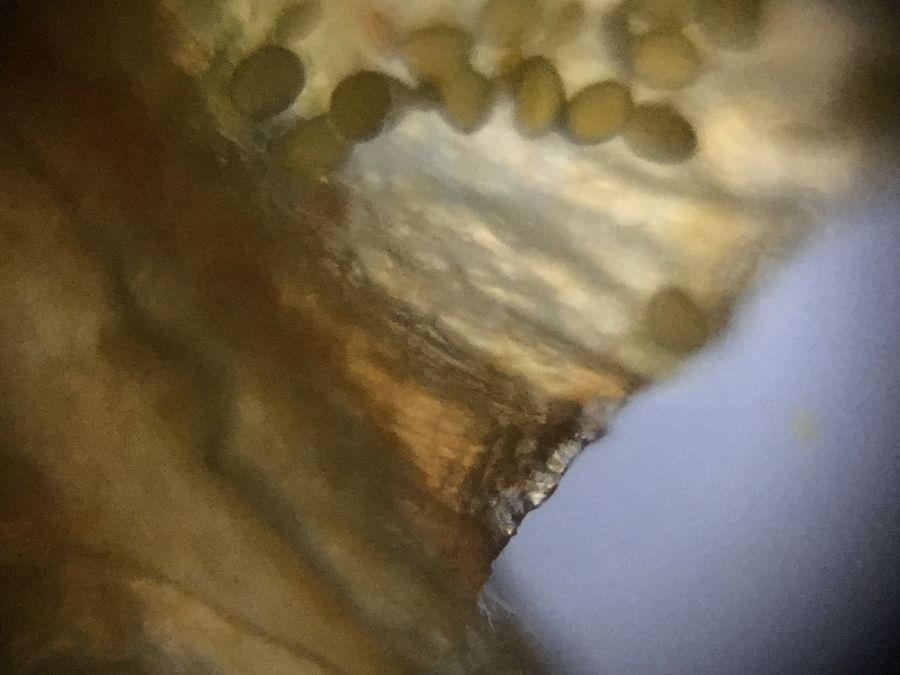
Flower #3 stamen section.
From the way I cut the stamen, I really don’t know if these elliptical pollen granules are inside or if I deposited them while slicing. More exploring would be needed to find out!
From the way I cut the stamen, I really don’t know if these elliptical pollen granules are inside or if I deposited them while slicing. More exploring would be needed to find out!
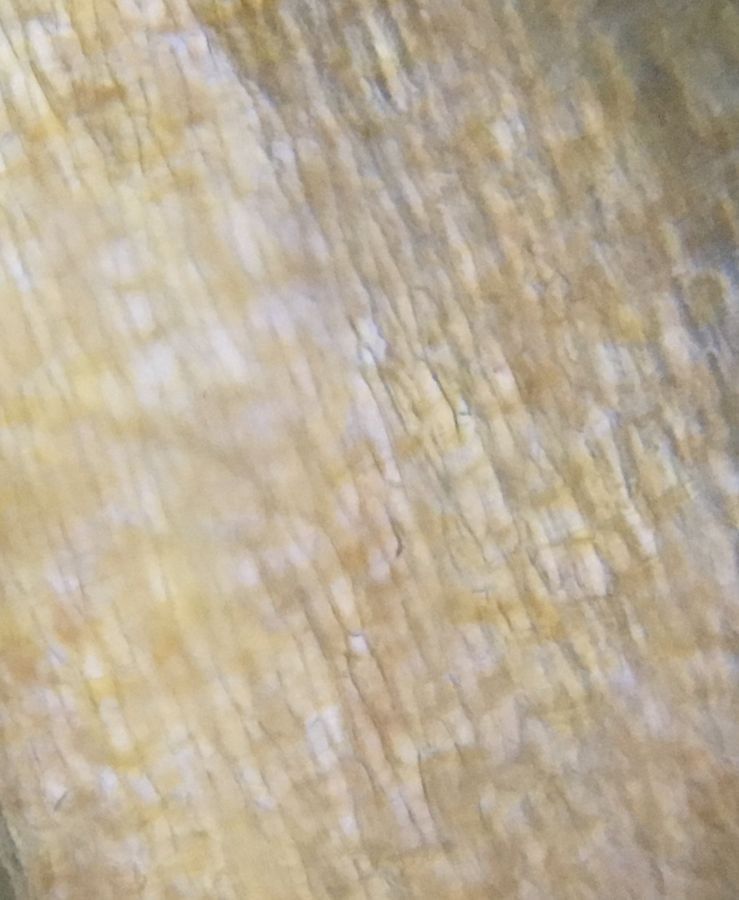
Flower #3 filament section.
Farther away from the anther, cells are elongated and aligned in the filament.
I noticed that a liquid seeps from the cut stamen. In contrast, the pollen grains on the outside of the anther are surrounded by air. How does liquid influence the pollen grain shape? To investigate this, I collected fresh pollen sample from the yellow flower (#4). Again, I dusted a slide with pollen. By spreading the pollen into a thin layer with another slide, I ended up with two slides from the same pollen sample.
Farther away from the anther, cells are elongated and aligned in the filament.
I noticed that a liquid seeps from the cut stamen. In contrast, the pollen grains on the outside of the anther are surrounded by air. How does liquid influence the pollen grain shape? To investigate this, I collected fresh pollen sample from the yellow flower (#4). Again, I dusted a slide with pollen. By spreading the pollen into a thin layer with another slide, I ended up with two slides from the same pollen sample.
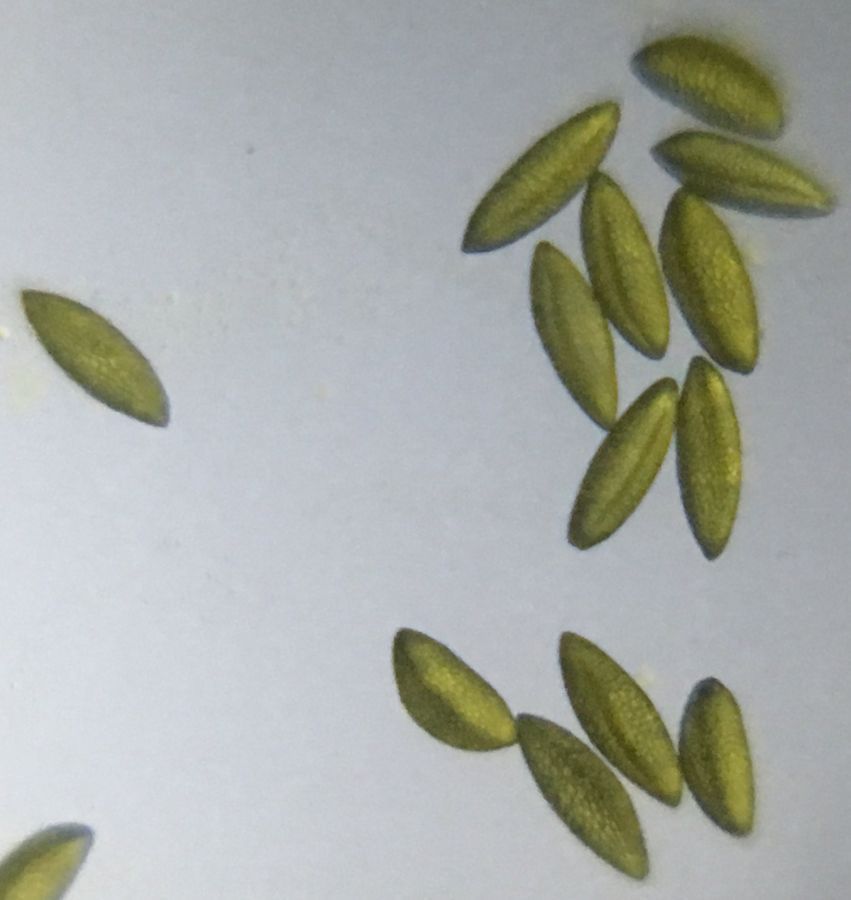
Pollen grains from flower #4. This came from the same plant as Flower #1, but a different blossom. On the dry slide, I put a coverslip and imaged. Like before, the pollen grains are roughly tactoid-shaped. These pollen grains are more elongated, however, and have a central crease, sort of like a coffee bean.
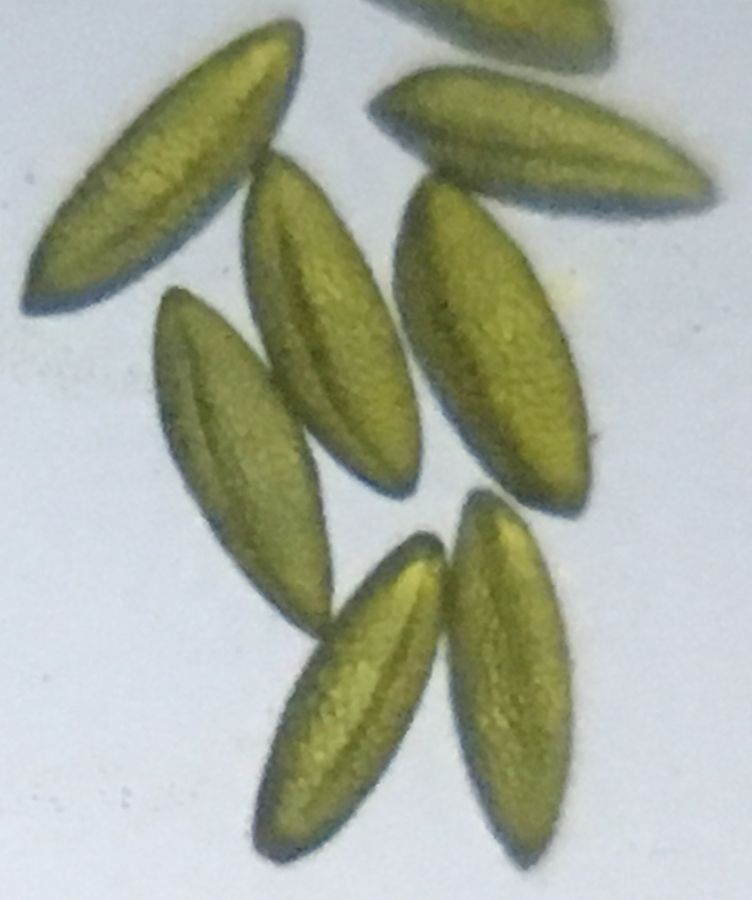
Close-up of dry pollen grains from Flower#4.
Looking closer, we can see the central crease. Now that my foldscope technique is improving, I can see the pollen grains also have a texture. I wonder if the earlier pollen grains also had a central crease, but I didn’t see it because of my imaging…
Looking closer, we can see the central crease. Now that my foldscope technique is improving, I can see the pollen grains also have a texture. I wonder if the earlier pollen grains also had a central crease, but I didn’t see it because of my imaging…
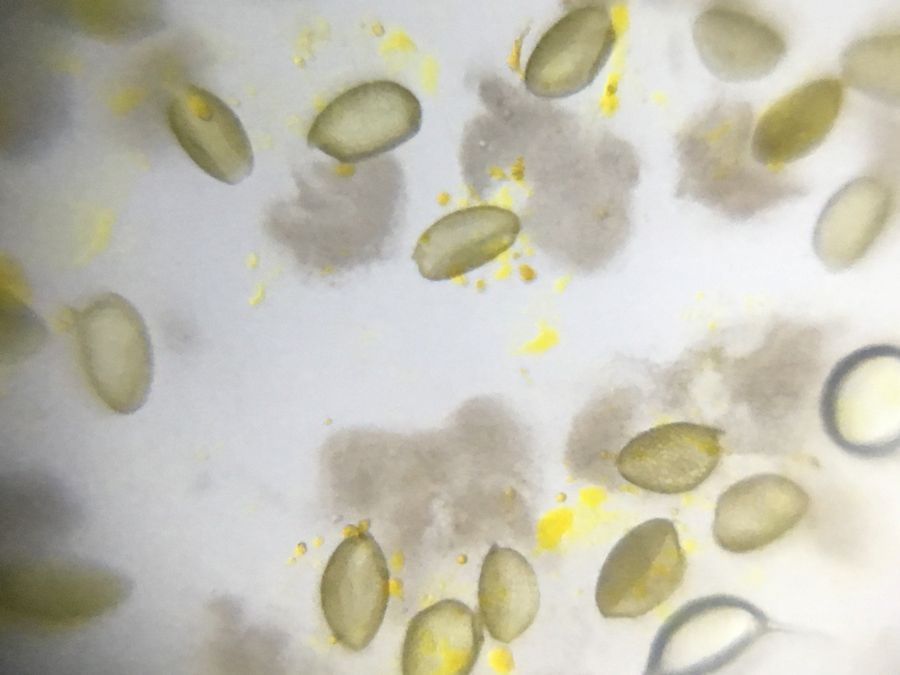
Pollen grain from Flower #4 in saline solution. On the other pollen sample, I gently placed a drop of saline solution on the pollen. (Saline solution is just a salty water.) The pollen grains in saline are rounder and more transparent. Also, blobs of a yellow substance are in the surrounding solution.
Do the pollen grains swell in the saline solution? To explore more, we could change the concentration of salt in the solution and see if the pollen shape changes.
Do the pollen grains swell in the saline solution? To explore more, we could change the concentration of salt in the solution and see if the pollen shape changes.
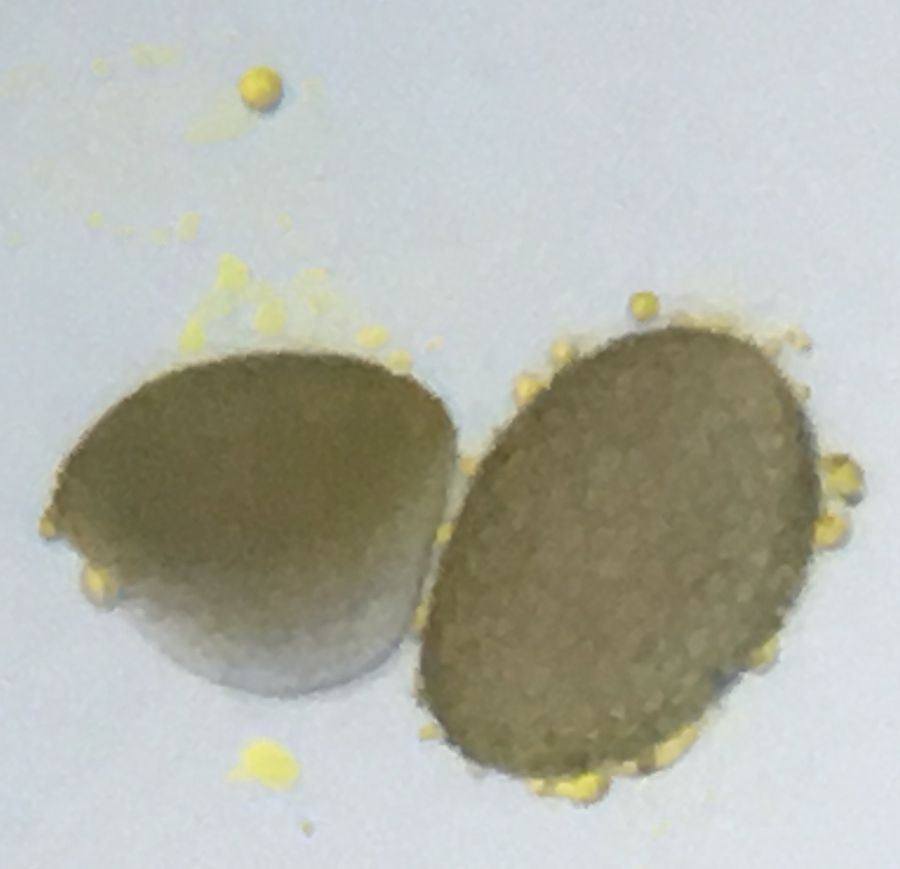
Close-up of pollen grain in saline solution. Looking closer, we can see the yellow substance in beads around the pollen grain, suggesting that it is coming off in solution. The spherical beads that the yellow substance forms are like oil droplets in water, suggesting that the yellow substance is not entirely soluble in saline solution.
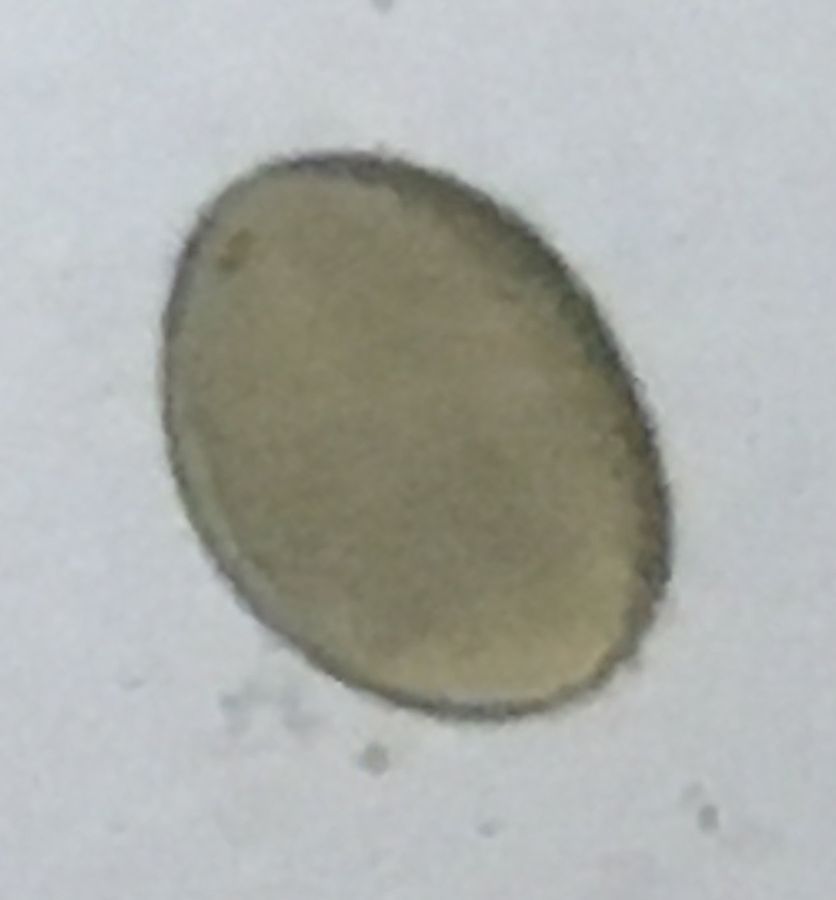
Pollen grain in a soapy saline solution. If I add the tiniest amount of soap to the saline, the yellow substance is no longer visible, but the pollen grains have a similar shape. Can you think of what this could mean? We need to plan careful experiments to understand what the yellow substance is and why the pollen grain shape changes, but we found so many directions to explore!
Happy Foldscoping! So much left to explore!
Kim
Happy Foldscoping! So much left to explore!
Kim
Sign in to commentNobody has commented yet... Share your thoughts with the author and start the discussion!
More Posts from Kim Weirich
No more posts from this author.